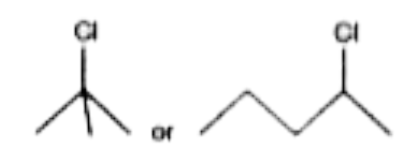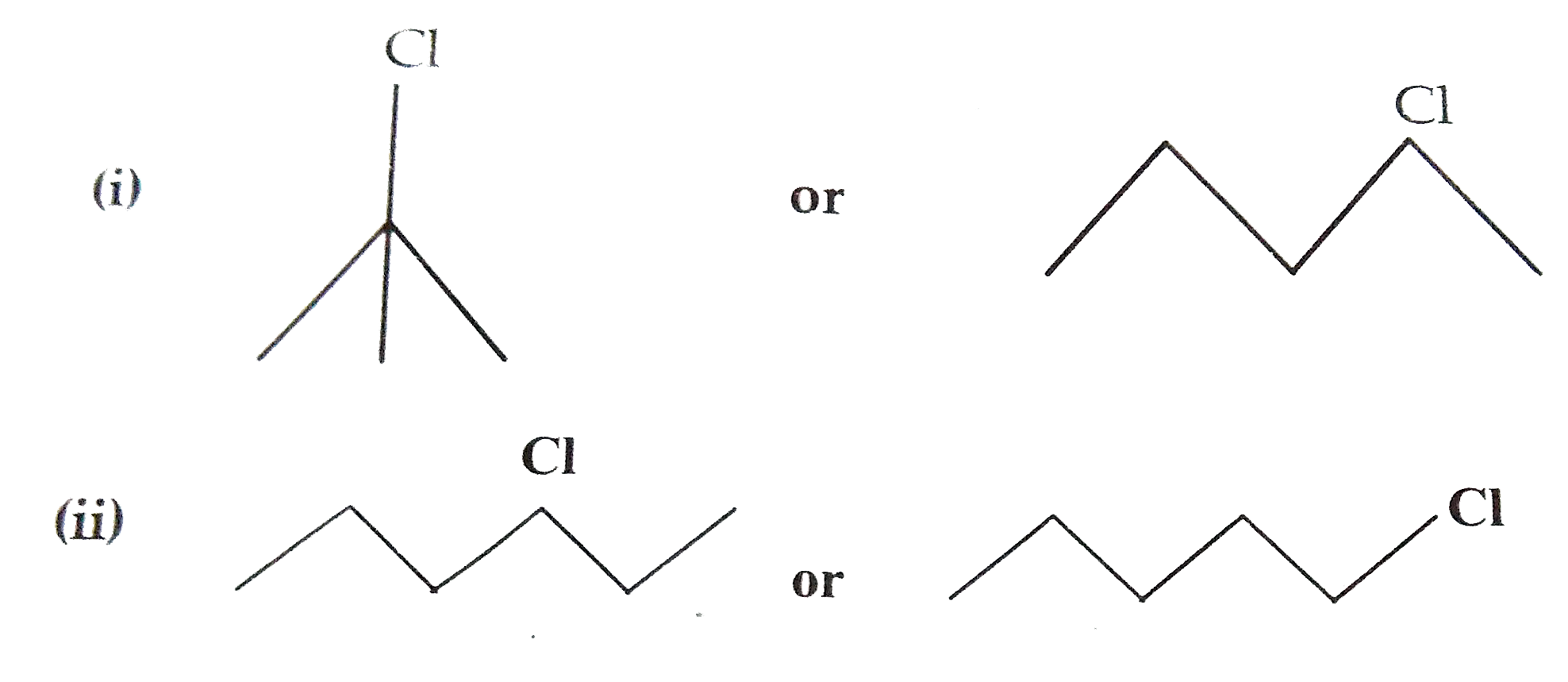Which will undergo fastest SN2 substitution reaction when treated with NaOH ?
H5C2−CH3∣C∣H−Br
H3C−CH3∣C∣CH3−Br
H−CH3∣C∣C2H5−Br
H−H∣C∣Br−CH2−CH2−CH3
The correct Answer is:4
To determine which compound will undergo the fastest SN2 substitution reaction when treated with NaOH, we need to analyze the steric hindrance around the carbon atom that is bonded to the leaving group (in this case, bromine).
1. Identify the Compounds:
We need to look at the structures of the compounds provided in the question. Each compound will have a halogen (bromine) attached to a carbon atom that is also connected to other groups.
2. Understand SN2 Mechanism:
The SN2 reaction mechanism involves a nucleophile (in this case, hydroxide ion, OH−) attacking the carbon atom bonded to the leaving group (bromine) from the opposite side. This results in the inversion of configuration at that carbon center.
3. Evaluate Steric Hindrance:
The rate of SN2 reactions is significantly affected by steric hindrance. The more bulky groups attached to the carbon atom, the slower the reaction will be.
- Primary Alkyl Halides: These have the least steric hindrance and will react the fastest.
- Secondary Alkyl Halides: These have moderate steric hindrance and will react slower than primary.
- Tertiary Alkyl Halides: These have the most steric hindrance and will react the slowest, often not undergoing SN2 reactions at all.
4. Analyze Each Compound:
- If a compound has a primary carbon (attached to one alkyl group), it will undergo the SN2 reaction faster than a secondary or tertiary carbon.
- If a compound has a tertiary carbon (attached to three alkyl groups), it will be the slowest or may not react via SN2.
5. Conclusion:
After analyzing the steric hindrance for each compound, the one with the least steric hindrance (usually a primary alkyl halide) will undergo the fastest SN2 substitution reaction.
Final Answer:
The compound with the least steric hindrance, typically a primary alkyl halide, will undergo the fastest SN2 substitution reaction when treated with NaOH.
We need to look at the structures of the compounds provided in the question. Each compound will have a halogen (bromine) attached to a carbon atom that is also connected to other groups.
The SN2 reaction mechanism involves a nucleophile (in this case, hydroxide ion, OH−) attacking the carbon atom bonded to the leaving group (bromine) from the opposite side. This results in the inversion of configuration at that carbon center.
The rate of SN2 reactions is significantly affected by steric hindrance. The more bulky groups attached to the carbon atom, the slower the reaction will be.
- Primary Alkyl Halides: These have the least steric hindrance and will react the fastest.
- Secondary Alkyl Halides: These have moderate steric hindrance and will react slower than primary.
- Tertiary Alkyl Halides: These have the most steric hindrance and will react the slowest, often not undergoing SN2 reactions at all.
- If a compound has a primary carbon (attached to one alkyl group), it will undergo the SN2 reaction faster than a secondary or tertiary carbon.
- If a compound has a tertiary carbon (attached to three alkyl groups), it will be the slowest or may not react via SN2.
After analyzing the steric hindrance for each compound, the one with the least steric hindrance (usually a primary alkyl halide) will undergo the fastest SN2 substitution reaction.
The compound with the least steric hindrance, typically a primary alkyl halide, will undergo the fastest SN2 substitution reaction when treated with NaOH.
Topper's Solved these Questions
- HYDROCARBONSBOOK - AAKASH INSTITUTE ENGLISHCHAPTER - HYDROCARBONSEXERCISE - Assignment(Section - B) (Obejctive type question)
5 Videos
- HALOALKANES AND HALOARENES BOOK - AAKASH INSTITUTE ENGLISHCHAPTER - HALOALKANES AND HALOARENES EXERCISE - ASSIGNMENT SECTION -D
15 Videos
- HYDROGENBOOK - AAKASH INSTITUTE ENGLISHCHAPTER - HYDROGENEXERCISE - ASSIGNMENT (SECTION - D) (Assertion-Reason Type question)
15 Videos
Similar Questions
Knowledge Check
The ether that undergoes electrophilic substitution reactions is
ACH3OC2H5BC6H5OCH3CCHOCH3DC2HOC2H3Which of the two stereoisomers of 4-t-butylcyclohexyl iodide (127I−) will undergo S2N substitution with 128I− faster, and why?
 AA will react faster because it is the more stable of the two isomersBA will react faster because it will yield a more stable product, and the transition state for both reactions is of the same energyCA will react faster because the approach of 128I− can depart unhindered.DB will react faster because it is less stable than A, and the transition state for both reactions is of the same energy
AA will react faster because it is the more stable of the two isomersBA will react faster because it will yield a more stable product, and the transition state for both reactions is of the same energyCA will react faster because the approach of 128I− can depart unhindered.DB will react faster because it is less stable than A, and the transition state for both reactions is of the same energyWhich compound undergoes nucleophilic substitution with NaCN at the fastest rate ?
A B
B C
C D
D
Which one in the following pairs of substances undergoes SN2 substitution reaction faster and why?

View SolutionWhich one of the following pairs undergoes Snl substitution reaction faster and why?

View SolutionWhich one of the following pairs undergoes Snl substitution reaction faster and why?

View SolutionWhich of the following will undergo self aldol reaction on heating with dil. NaOH
View SolutionWhich of the following compound gives fastest SN2Ar reaction?
View Solution

